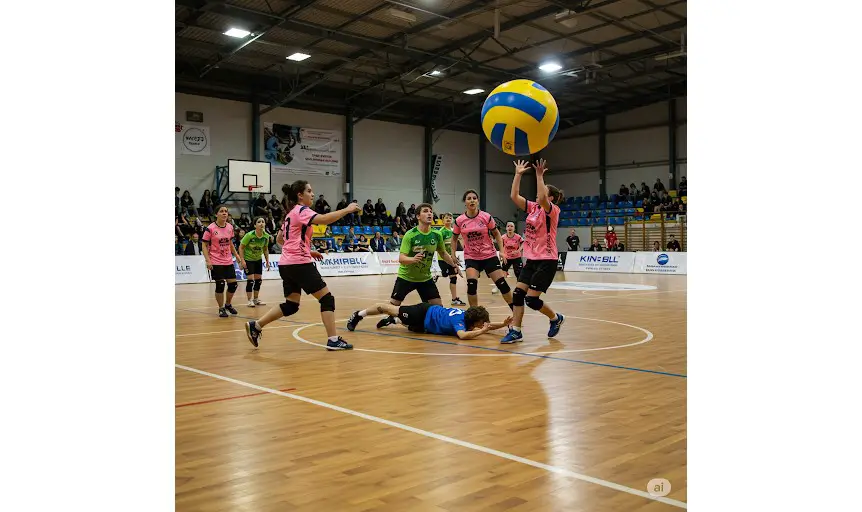
The Ultimate Guide to Kin Ball: A Global Phenomenon
Introduction
Kin Ball is a unique and exciting sport that has been gaining attention worldwide. This high-energy game emphasizes teamwork, strategy, and inclusivity, making it popular among players of all ages. With its origins rooted in promoting collaboration over competition, it stands out from traditional sports. Today, it is played in schools, amateur leagues, and even professional settings across the globe. In this comprehensive guide, we will delve into the origins, global popularity, amateur participation, professional leagues, and social significance of Kin Ball. Additionally, we will provide an in-depth explanation of its rules.
The Origin and History of Kin Ball
It was invented in 1986 by Canadian physical education teacher Mario Demers. He created the sport to encourage cooperation and reduce the focus on individual competitiveness in physical activities. The game’s name derives from the French term “Omnikin,” which emphasizes inclusivity and universal participation.
Initially, the sport gained traction in schools throughout Quebec, Canada. Its simplicity and emphasis on teamwork made it a favorite among educators. The game’s popularity quickly spread across Canada and then into other countries. Today, it has become a staple in physical education programs worldwide, with the International Kin Ball Federation overseeing its global development.
The Global Popularity of Kin Ball
It has achieved remarkable international popularity, with organized play in over 30 countries. In Europe, nations like France, Spain, and Belgium have embraced the sport, hosting regular tournaments and championships. In Asia, countries such as Japan and South Korea have incorporated Kin Ball into their school curriculums and community programs.
The sport’s global appeal lies in its accessibility. The equipment is minimal, requiring only a large inflatable ball and a designated play area. Furthermore, Kin Ball’s emphasis on inclusivity and teamwork resonates with diverse cultural values. International tournaments, such as the Kin Ball World Cup, have further elevated its status. These events showcase top talent and foster cross-cultural connections among players and fans.
Amateur Kin Ball in Schools and Communities
Amateur Kin Ball thrives in schools, where it is often introduced as part of physical education programs. The game’s cooperative nature makes it ideal for teaching students the importance of teamwork. Unlike many traditional sports, it minimizes physical contact, reducing the risk of injuries. This aspect is especially appealing to educators and parents.
Youth leagues have also emerged, providing opportunities for children to compete in a supportive environment. Community centers and recreation programs frequently organize amateur Kin Ball events. These gatherings promote physical fitness and social interaction among participants.
In schools, teachers use it to foster inclusivity among students. The sport requires communication and collaboration, helping shy or less athletic children feel more involved. Beyond schools, amateur leagues for adults have grown, particularly in urban areas. These leagues offer a fun and engaging way to stay active while meeting new people.
Professional Leagues and Competitions
The professional scene is steadily growing. The International Kin Ball Federation plays a central role in organizing professional leagues and tournaments. Established leagues exist in Canada, Europe, and Asia, attracting talented players and enthusiastic audiences.
The Kin Ball World Cup, held every two years, is the sport’s premier event. Teams from around the world compete for the title, showcasing exceptional skill and strategy. National championships and regional leagues also contribute to the sport’s professional development. Countries such as France, Japan, and South Korea have particularly strong professional teams.
Sponsors and media coverage are starting to recognize the potential of Kin Ball as a marketable sport. While still relatively niche, professional Kin Ball is gaining momentum. This growth reflects the sport’s ability to unite people and provide thrilling entertainment.
The Political and Social Significance of Kin Ball
Kin Ball holds significant political and social value. It promotes inclusivity and teamwork, aligning with global efforts to foster unity and understanding. The sport’s cooperative nature makes it an excellent tool for breaking down cultural barriers.
In schools, it teaches students about the importance of collaboration. It encourages children to value diverse perspectives and work together toward common goals. These lessons extend beyond the classroom, influencing how participants interact with others in their communities.
On a broader scale, Kin Ball events often bring together players and fans from different backgrounds. International tournaments create opportunities for cultural exchange and mutual respect. The sport’s emphasis on fair play and respect aligns with broader societal goals of equality and inclusion.
Rules of Kin Ball
Understanding the rules is essential for appreciating its unique gameplay. The sport is played with three teams, each consisting of four players. A large, lightweight ball—measuring about 1.2 meters in diameter—is used.
The objective is to score points by successfully striking the ball in a way that forces the opposing teams to fail to catch it. Players must call out the color of the team they are targeting before hitting the ball. This requirement adds a strategic element to the game, as teams must anticipate and respond to the play.
A match typically consists of three periods, each lasting about 15 minutes. Teams score points when the designated team fails to catch the ball before it hits the ground. Fouls can occur for various reasons, such as improper hits or failing to call out the target team’s color.
The rules emphasize fairness and sportsmanship. Players are encouraged to communicate effectively and support their teammates. This focus on positive interaction sets it apart from many other sports.
Conclusion
Kin Ball is more than just a sport; it is a celebration of teamwork, inclusivity, and global unity. From its origins in Canada to its growing popularity worldwide, it continues to inspire players and fans alike. Whether played in schools, amateur leagues, or professional settings, the sport offers something for everyone. Its unique rules and cooperative nature make it a standout activity in the world of sports. As Kin Ball evolves, its impact on society and culture will undoubtedly continue to grow.




